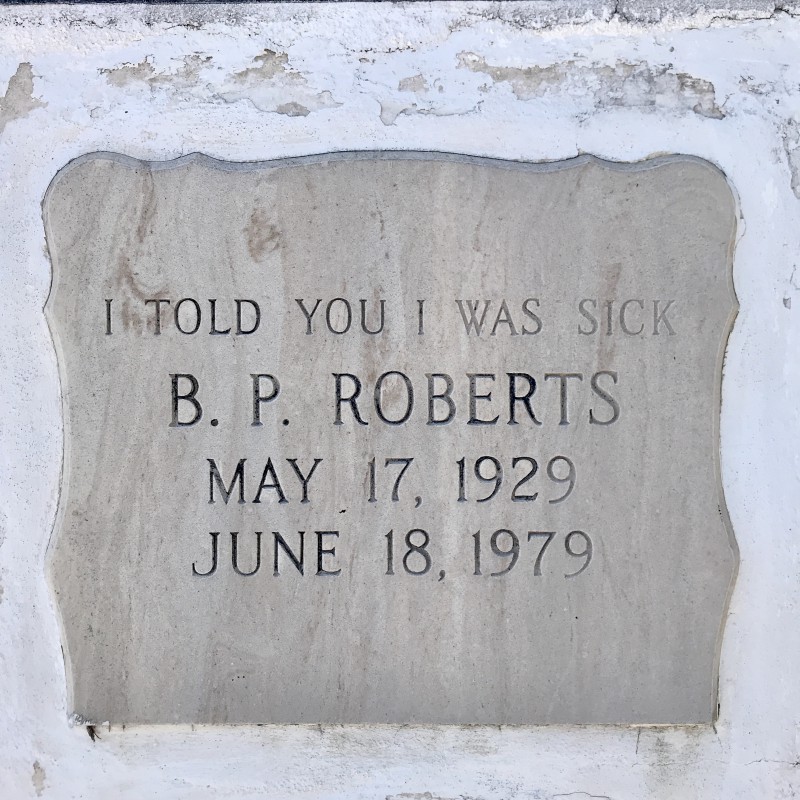
April A to Z Challenge 2020: It’s that time of year! Every April, bloggers around the world make posts for each letter of the alphabet. It’s a lot of fun and a great way to make friends online. Here’s my post for today:
[The following is an adapted excerpt from my book, Understanding Cemetery Symbols. I hope you enjoy it! Also, full disclosure: that’s an Amazon affiliate link. If you buy stuff after clicking it, I make a few pennies at no additional cost to you.]

What are epitaphs?
Epitaphs are the words of remembrance inscribed on a grave marker. The practice of using epitaphs dates back to ancient Greece. The word “epitaph” comes from the Greek epi, meaning “around” and taph meaning “tomb.”
Even if you are not related to the deceased, you may find certain graves so intriguing that you want to know more. These days, with search engines like Google and genealogy resources such as Ancestry.com, you can often satisfy the curiosity inspired by your visit to a historic graveyard with a few simple computer keystrokes.

Memento mori as an epitaph
Perhaps the most well-known epitaph of all is RIP, an easy-to-remember acronym for the Latin phrase Resquiat in Pace, meaning “Rest in Peace.”
In Roman days, however, Sta viator, meaning “Pause, traveler” was more commonly used, since Roman soldiers were often buried by the roadside.
Generally speaking, the older the epitaph, the grimmer it will sound and the less personal it will be. Puritans, for instance, often used the phrase Memento Mori on their headstones, Latin for “Remember you must die.” (I know it’s hard to read, but the photo above includes the words “Memento Mori.”)

A shift in tone
Gravestones for colonial era Americans rarely included more than the birth and death date. For the most part, epitaphs were reserved for prestigious men, and rarely bestowed on the graves of women.
Gradually, epitaphs began to shift in tone from dire reminders to die, to gentler sounding phrases such as, “Here lies the mortal remains of…” “Sacred to the memory of…” and “Gone, but not forgotten.”
Some of the most poetic, uplifting and personal epitaphs arose in the 1800s along with the popularity of America’s garden cemeteries.

Modern epitaphs
Nowadays, epitaphs can be formulaic or highly personal. They run the gamut from brief phrases, poems, song lyrics and scriptures, to a lengthy list of of the deceased’s attributes. I recently came across a modern one that read more like a Linked In profile than an epitaph!

Funny epitaphs
What I enjoy about epitaphs is how much personality, and even humor, they add to a cemetery visit. One of my favorites can be seen in Key West, Florida on the grave of a woman who caught flack for being a hypochondriac. After she passed away in 1979, B.P. “Pearl” Roberts used her epitaph to sum up a lifetime of frustration with one little phrase, “I told you I was sick.”
In the same cemetery, I also saw headstones reading “Just resting my eyes,” “Devoted fan of singer Julio Iglesias,” and, “If you’re reading this, you desperately need a hobby.” I’m not sure what it is about “Margaritaville” that inspires these one-liners, but I have never seen so many humorous epitaphs in a single burial ground.

My friend created a meaningful epitaph
My friend, Mark Olson, created a unique and meaningful epitaph for his mother’s grave as you can see in the photo above. Mark and I will be discussing how and why he created this monument on the next episode of Tombstone Tuesday, my 30-minute podcast about exploring historic cemeteries. If the topic interests you, I hope you’ll join us – or maybe even call into the show! (Click here to listen to the show and see the graphic below for more info.)
Learn more at my Historic Cemetery Podcast & Facebook Page:
Do you have questions about symbols you’ve seen on headstones? Drop by Exploring Historic Cemeteries on Facebook and let me know! And tune in to my 30-minute historic cemetery podcast on the first Tuesday of each month: Tombstone Tuesday with Tui Snider.
READ MY BOOK: If you enjoy historic cemeteries and want to learn more, check out my book: Understanding Cemetery Symbols. It’s available on Amazon in paperback and ebook form.


Love this post…. most of my ancestors headstones in Devon started with Sacred to the Memory of… with a couple of lines from poems? at the bottom.
No funny ones in our family!
Yeah, the funny ones are definitely rare – except in Key West, Florida for some reason!
“Don’t you dare put ketchup on that!” I love it!
Hehe! Funny, right? I’m going to ask him the story behind that on my podcast later today.
The epitaph of Daniel Malcolm’s grave in Boston is interesting because it refers to him as a “True Son of Liberty.” The grave is covered with pockmarks because British soldiers used for target practice during the Revolution.
Target practice? Wow! I had plans to visit burial grounds in Boston later this year, but I’m not sure if I’ll get to go.
There’s a wealth of information on history that can be got just by looking at epitaphs. All the best for the challenge.
Yes, they certainly tell stories! :)
Well, I know that the 1800s epitaphs were poetic, but I didn’t knwo that there were now humorous epitaphs.
@JazzFeathers
The Old Shelter – Living the Twenties
Especially in Key West, for some reason. People seem to be very lighthearted there!